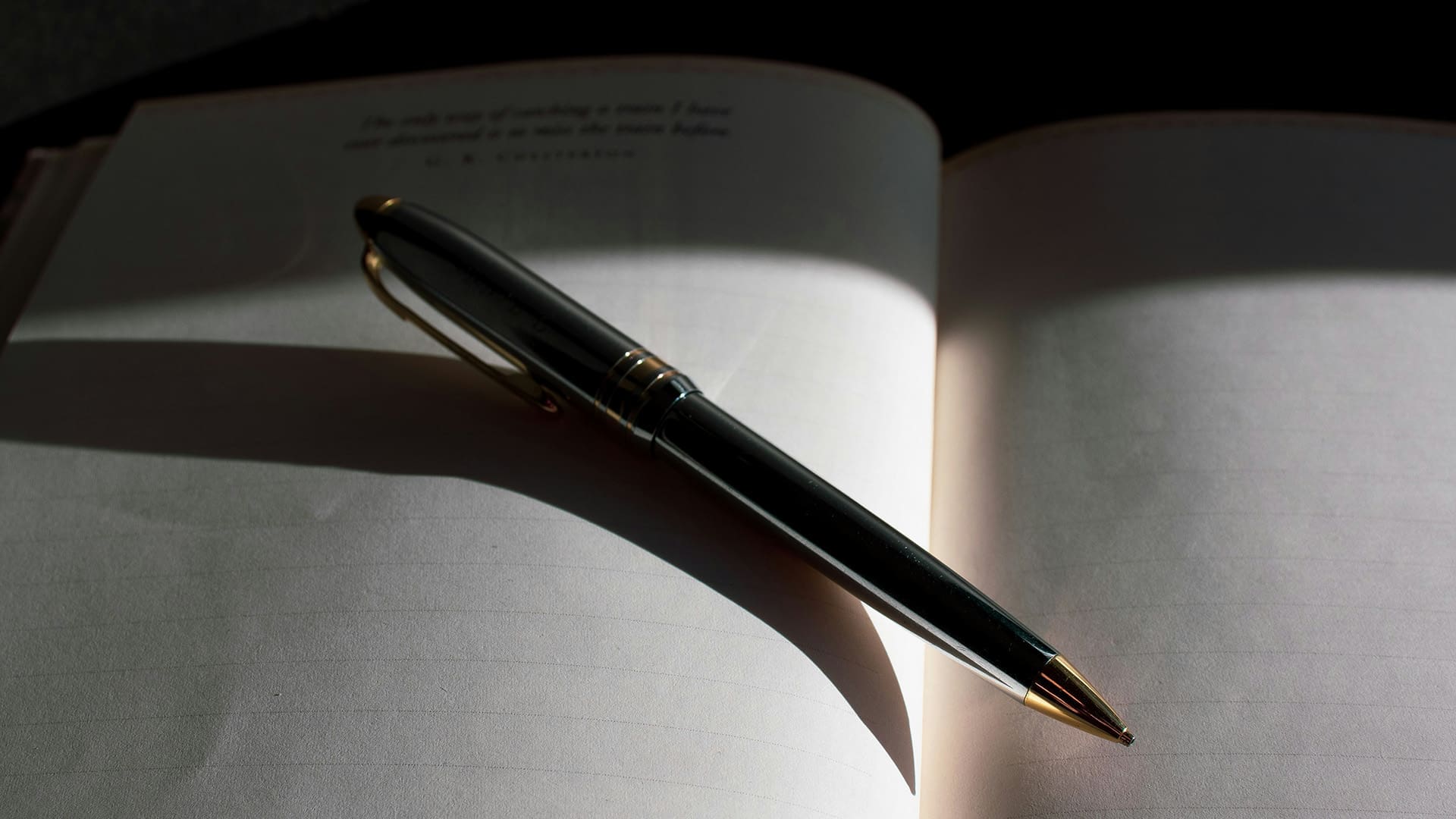T
The evidence is in, and it is overwhelming and undeniable: we human beings can be terrible decision-makers. Regardless of what we think we do, we all make snap judgments about almost everything, and then we use reasoning to justify those judgments. When faced with the question of how we should act, we muddle around at best, and at worst we don’t muddle at all but just act or react. If we are going to grow in the art of discernment, the first step is to understand why we are so bad at it, especially in an accelerated technological society such as ours. When we slow our roll, we learn that discernment is hard mental and emotional work and that the imagination is the faculty that must take the lead.
Recognizing the Elephant
In his groundbreaking book Thinking, Fast and Slow, based on decades of research, Daniel Kahneman illustrates how powerful our non-conscious cognition is. Kahneman calls non-conscious cognition System 1, which is fast, intuitive, and emotional. This system does most of our mental work, evidenced each time we drive a car or brush our teeth without thinking. He calls the logical part of our mental processes System 2, which is slower and more deliberate. System 1 is so much more powerful than System 2 that Jonathan Haidt in The Righteous Mind calls it an elephant. The elephant represents the concealed beliefs, emotions, and intuitions that drive our decisions no matter how smart the rider on top may be. I’ll use Haidt’s metaphor of the elephant to denote System 1, and the rider, System 2.
Haidt describes decisive evidence that we make snap judgments based on first impressions of people. In just one example of many, researchers gave people images of political candidates they did not recognize (with no other information) and asked them to judge which were more competent. Two-thirds of the time, the candidates whom those subjects judged to be more competent were the ones who had won their races. The subjects made their judgments based solely on photos, which could not reveal competency. Haidt concludes that “within the first second of seeing, hearing, or meeting another person, the elephant has already begun to lean toward or away, and that lean influences what you think and do next. Intuitions come first.”
Kahneman discovered that we make and defend snap judgments because it is cognitively easier. Our elephant’s rider is lazy, especially when preoccupied with other stressful tasks. But it also turns out that although the elephant can rarely be directed in the moment, it can be trained (to some extent) over time. For example, after thousands of hours of practice, chess masters know their next move instantly. They no longer think the way average players do; masters see the board and intuit what to do. Their hours of study and experience, coupled with exceptional intellectual gifting, move the deliberate thinking required by the rider back to the elephant. Consider one of the most mentally demanding positions in all of sports: quarterback in the NFL. The position demands the fast and accurate thinking that is the hallmark of the elephant, what football nerds call “processing speed.” Elite quarterbacks appear to be acting fully instinctively, even unconsciously, because by that point they are. After hours of practice and repetition, the game slows down for them. They don’t deliberate; they see and act instantaneously.
The problem is that although chess and football can be mastered with intense focus and discipline, no one can master the hugely complex game of life. Couple the human tendency to make snap judgments with the acceleration of our technological society and you can see why true wisdom seems so hard to find these days. We live in a society in which the pace of life makes it feel like we are all quarterbacks, forced into making quick decisions before the linebackers knock us down. Although there is no way we can train for life’s decisions enough to make accurate snap judgment calls in every case or even most cases, we make them anyway, rarely slowing down to recognize the enormity of the decisions in front of us.
That news is bad enough, but it gets worse. Kahneman discovered that even when we do slow our roll sufficiently to wake up the rider, we don’t recognize that the elephant has already been leaning. In Christian terms, I may say that my moral foundation is in Christ, but my behaviour will be shaped much more by what I’ve given most of my attention to, by those practices and habits that have shaped my unconscious desires and beliefs. Because my higher reasoning is lazy, when it comes to discernment, my behaviour will also be determined more by my baseline daily habits and unconscious tribal affiliations than by reason.
The upshot of all this is that our trust in intuition makes us think that we know what we don’t actually know. Our blindness to the trust we place in intuition is fatal to discernment. We don’t know what we don’t know, and it is cognitively easier to never question what we think we know. This is bad news indeed.
Inhabiting Imagination
What can save us from our blindness? Reading Kahneman and Haidt would be a good start. With basic awareness of how we all make decisions intuitively, we can get better at training our intuition the way an elite athlete would: by intentional practice, discipline, and habit building—to “meditate on the laws of God day and night,” as the psalmist says. We must acknowledge, however, that this way of life has become more difficult in the twenty-first century. It is the near opposite of the activity that our fast-paced digital society rewards. We have been malformed to read for information instead of transformation, as if more information necessarily leads to better decisions. We have no time for the slower, more meditative forms of reading and writing, such as fiction, poetry, and the essay, that can reveal what wisdom in action looks like. Worse, because we’ve lost local communities, we read alone, deracinated and adrift, making it even harder to read for transformation and growth. Jeffrey Bilbro’s Words for Conviviality is just one of many recent books that show how the speed and enormity of digital technologies malform us to think of reading as a technique to gain individual benefit rather than as a “mode of participating in a community oriented toward understanding and practicing truth.”
It is not reason but the imagination that we must engage to see choices more distinctly.
Now that we understand that reason is not leading the way when we make decisions, we are able to see what’s really going on. It is not reason but the imagination that we must engage to see choices more distinctly, which is what the word discernment denotes. We must return together to the literary, imaginative modes of reading, and we must learn to write through our own issues in turn.
The essential role of the imagination is why I’ve dedicated my career in literary studies to the question of what it takes to change a person’s mind about any idea we hold too dear to be questioned. Not the ideas that we come to through rigorous thinking, prayer, and self-analysis, but the faulty ideas we have never examined because of ignorance, laziness, or fear. We all want cognitive ease and a low-friction life. We all want to believe that we routinely make good decisions and will do so when pressed. And we’ve all known people who have blinded themselves to their own flaws and illusory beliefs so completely that no amount of challenge seems to matter. What interests me is what it takes to let light in through the massive blinders we all erect and defend. Since we inherently trust our instincts, how can we discover when we’ve been misled?
Part of the answer can be found in the power of story. Stories are everywhere, and they continuously form or malform us. Furthermore, we all unconsciously write ourselves into narratives that become true for us as we rehearse them, even when they are based on untruths. Stories about others can thus help us see how we construct these stories ourselves, all the time. They can show us our faulty beliefs in operation and how the narrative we are currently living by is not serving us. Stories can also open our imagination to possibilities for a different narrative. We cannot rightly discern a correct decision unless we can see the choices we have more clearly.
As I explained above, our biggest problem when it comes to imagining a different narrative is that we don’t know what we don’t know. The art of the essay was born to help writers (and readers) learn that. “Essay” comes from the French word essayer—to attempt, to try—and Michel de Montaigne is credited with the first attempts at what we now call creative nonfiction or personal essay. The personal essay is, at base, an attempt to organize the writer’s experience into a meaningful structure, a story. That story, even if factually true, is always fictional because it is populated with intentions that necessarily exceed the facts on the ground. The resulting story can be truthful or delusional, aspirational or defeatist, depending on the honesty and integrity of the writer. In other words, the power to tell a story doesn’t make it a true story. If your sixteen-year-old son gets into an accident with your car, he may weave the facts into one version of the story when he talks to you and a completely different version of the story when he talks to his friends. Growth happens only when your son learns to tell the most truthful version of the story possible (to himself especially) and then uses that story to redirect his own life with intentionality and integrity. Learning the need for truth and the power to redirect a limiting or false narrative is not easy and requires a lifetime of work.
Montaigne’s attempts at capturing himself in the process of attaining self-awareness and growth are legendary and still worth reading today. His work illustrates that the best essays begin in one place and end in another, not in a way that contradicts the beginning, but in a way that uncovers the faulty moves and thus encompasses them. It’s dialectical. Montaigne gives an idea and then takes it away, thus training the muscle for discernment in a way that allows all to see and learn from. Reading and studying excellent essays can help us figure out how discernment works because we can see it in operation.
Essaying Discernment
One of the best essays of this kind that I have encountered is Andre Dubus’s “Giving Up the Gun,” part of the marvelous collection Meditations from a Movable Chair. I’ve taught this collection for twenty years, and it is still revealing its power to me. Dubus wasn’t primarily an essayist. He was a master of short stories that feature impossible moral dilemmas. His stories reveal how a person’s formation enters every decision they make. In short, he understood the elephant in the room. In his essays he explores how his own intuition serves him, and when it leads him astray.
Dubus’s upbringing as a Catholic and his training as a Marine formed him. Both gave him the capacity to act quickly to help a motorist on a Massachusetts road in 1988. While he was assisting this motorist, another car sped by and hit him, leaving him in a wheelchair for the rest of his life. So when Dubus begins, “In the winter of 1990, sitting in my wheelchair in a sleeping compartment on a train from Portland, Oregon, to Chicago, I gave up my guns and the protection I believed they gave people I loved, and strangers whose peril I might witness, and me,” we know that this decision did not come naturally to him. He had to get there, and this essay explains how he did.
He tells us that he bought his first gun after his sister was raped (long before his accident). At first he just carried it in Boston when he was with a woman, but eventually he carried it all the time. He tells us in the present tense that he loves guns, the shape and weight of them in his hand. Of his first gun purchase he writes, “I held the tiny twenty-two as another person might hold a pocket watch or a ring, a hammer or a golf club. To me, that gun, like all my guns, was somehow alive, with a history and a future; with a soul. I loved it, and bought it.”
Reading and studying excellent essays can help us figure out how discernment works because we can see it in operation.
Through the act of processing his love of guns with us, Dubus discovers that he never questioned his original images of how he would use the gun. With his gun at the ready, he assumed that if a man was threatening a woman, he would shoot into the air and the man would then leave. “If a shot in the air did not change his dark direction and send him running, if instead he attacked, I would shoot his leg or shoulder. This was all very tidy, and I believed it.” Dubus’s intuition was clearly in charge, convincing him that a gun would give him control of any situation. “I had the gun,” he writes, “and I believed that nothing would happen, simply because I was prepared for it; and that if something did happen, it would be as I had imagined it.”
Dubus gives us a front-row seat to witness how he eventually learned that he had been misled by his intuition. He writes that “my confidence in this was foolish, and the foolishness was as concealed from my soul as the gun in my pocket or holster was concealed from the eyes of other people.” The unconcealing of his foolishness began in a bar with an event that didn’t go according to his tidy plan. It was Tuscaloosa in 1985, and he was with a woman he had just met. They enjoyed a boozy happy hour and were sobering up to go to his place to watch a movie. In a split second the scene changes. A drunk man calls another man the n-word and threatens him with a knife. Dubus pulls out the twenty-two, aims it at the man’s stomach, and tells him to put down the knife. The man doesn’t do it, curses him, and eventually says, “Shoot. Go ahead. Shoot.” Not expecting this, Dubus tells him, “It’s a twenty-two hollow point, son. It’ll spread your guts all over that window.” The man offers to put his knife away if Dubus puts his gun away and fight him in the street instead. This is not the tidy situation Dubus had imagined. He doesn’t want to shoot, and he doesn’t want a fist fight. Fortunately, the man’s friend says to Dubus, “Mister, I know you can whip his ass. But please leave. I’ve got to get him out of here before the cops come.” Dubus leaves with the woman and tells her, “Men are funny. If that guy had said: ‘I know he can whip your ass,’ I would have had to fight him. But he said: ‘You can whip his ass.’ So he let me off the hook.”
The honesty with which Dubus relays this scene is essential to the discoveries it opens for him (and for us). Through processing this scene with us, he learns that having the gun actually gave him fewer choices. “That night . . . my only instinct had been to aim a gun. I had no conflict, because I had only one choice. Now I wanted more choices, and I wanted to know what they were.” Having a gun wedded Dubus to the faulty image of himself as a hero in control of situations he encountered. If any contradictory images came to mind, his intuition dismissed them as irrelevant. But now that he had experienced a scene in which events did not transpire as expected, he sees that he had been blind.
What makes this essay exceptional is how Dubus conveys that this event was just the beginning of his decision to give up his guns. For most of us it takes time for the scales to fall away from our eyes, and Dubus wants us to understand that writing this essay is an essential part of the work. Nearing the end of the essay, he tells us exactly that: “I have written all of this to try to discover why, sitting in my wheelchair on a train, I gave up my guns. But I do not know.” Notice the present tense; he actually does know (now), but he wants us to understand the work it took to get there.
The work is the writing. Through it, Dubus brings his earlier self together with his present self on the train. He reflects that it was eight months after the event in Tuscaloosa that he was injured and bound to a wheelchair. Less confident of his ability to protect anyone—especially himself—he buys a Beretta. Time passes and he finds himself on the train from Portland to Chicago. He is still afraid. He still has the gun. But perhaps because of the rhythm of the train—a rhythm not unlike the rhythm of writing—new images come to him. He imagines himself alone at home, an intruder coming at him. In his mind, he shoots the intruder in the leg, but the intruder keeps coming. Dubus writes, “I shot his chest, again and again, till he stopped coming. Then, as I looked out the train window at snow on the ground, one sentence came to me: With my luck, I’ll kill someone.”
At this moment, no doubt because of his newfound understanding that his trust in his intuition had blinded him, his imagination is freed from its former illusions. He imagines himself killing someone. The final paragraph hits us with immense, earned power:
That was all. Luck was not the accurate word, and I do not know what the accurate word is. But with that sentence, I felt the fence and gate, not even the lawn and porch and door to the house of sorrow I would live in if I killed someone. Then I felt something detach itself from my soul, departing, rising, vanishing; and I said to God: It’s up to You now. This is not the humble and pure and absolutely spiritual love of turning the other cheek. It is not an answer to turn someone else’s cheek. On the train, I gave up answers that are made of steel that fire lead, and I decided to sit in a wheelchair on the frighteningly invisible palm of God.
Dubus’s essay reminds us that we are always already searching for answers to truly difficult questions. Discerning the best way forward is hard work. But because we are human, we don’t like waiting. We quickly find answers that have already been formed within us in the shape of images of ourselves that give us the integrity we long for. Images we can live with. But when God’s illuminating grace meets us in a moment of stillness and true self–reckoning, sometimes something real can happen. We can let ourselves imagine that we are small, frightened, self-protective creatures with tremendous power to hurt others. Then we can understand grace, and then we can let go.



